Zalyvakha, Opanas
Zalyvakha, Opanas [Заливаха, Опанас; Zalyvaxa], b 26 November 1925 in Husynka, now in Kupiansk raion, Kharkiv oblast, d 24 April 2007 in Ivano-Frankivsk. Nonconformist artist. Zalyvakha grew up in the Far East, where his parents resettled in 1933. He was expelled from the Leningrad Art Institute in 1947 for not conforming to socialist realism but was readmitted after Joseph Stalin's death, and graduated in 1960. He then headed the art council in Tiumen, Russia, where his first solo exhibition was held, in 1961. In December 1961 he moved to Ivano-Frankivsk. There his second solo exhibition (April 1962) was closed down by the Communist Party authorities for ‘decadent tendencies.’ In 1964 Zalyvakha, Alla Horska, and Liudmyla Semykina were commissioned to create a stained-glass panel for the vestibule of Kyiv University's main building. Depicting Taras Shevchenko embracing a woman, it was destroyed on orders of Kyiv's Party secretary, V. Boichenko. Zalyvakha was arrested in August 1965 and sentenced at a closed trial in March 1966 to five years in a hard-labor camp in Mordovia for disseminating samvydav literature. After his release in 1970, he was forced to work as a laborer in Ivano-Frankivsk, but continued painting. The first solo exhibition of his paintings, sculptures, and ceramics in 26 years was held in Lviv in December 1988 at the Ukrainian State Museum of Ethnography and Crafts. A second was held in Ivano-Frankivsk in May 1989.
Throughout the years Zalyvakha has experimented. Despite stylistic variation, from the figurative (Woman from the Poltava Region, 1965) to the abstract (Primeval-Mother, 1975) to the stylized (Skovoroda, 1977), his subject matter has remained deeply rooted in his Ukrainian heritage and in Ukrainian history, as is evident in works such as Chumak Supper (1970) and Berestechko (1980s). Zalyvakha has painted numerous icons of the Mother of God, including Carpathian Mother of God (1960s), Cossack Madonna (1970s), and The Protectress (1988). He has used the three-faced compositions of 18th-century icons of the Trinity to create contemporary secular icons, such as Crying Ox (1975), in which two human faces are intertwined with that of a beast of burden. He has painted many portraits of Taras Shevchenko, of friends, and of family. Concerns about his fate and his nation's fate have resulted in works such as Lira Player, 1933 (1973) and Fate (1982).
Daria Zelska-Darewych
[This article originally appeared in the Encyclopedia of Ukraine, vol. 5 (1993).]
.jpg)
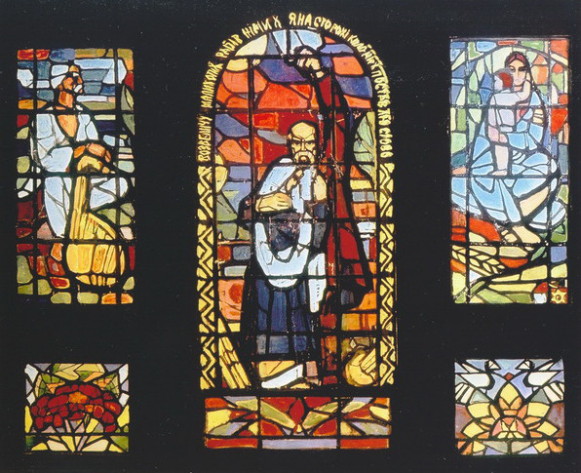
.jpg)
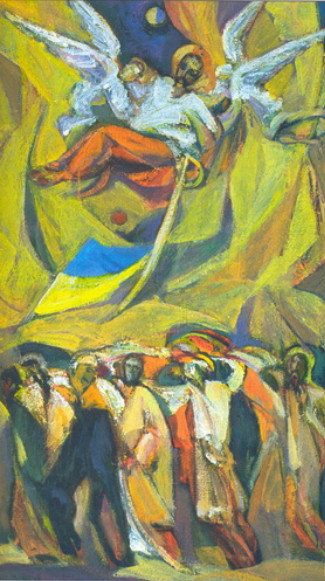
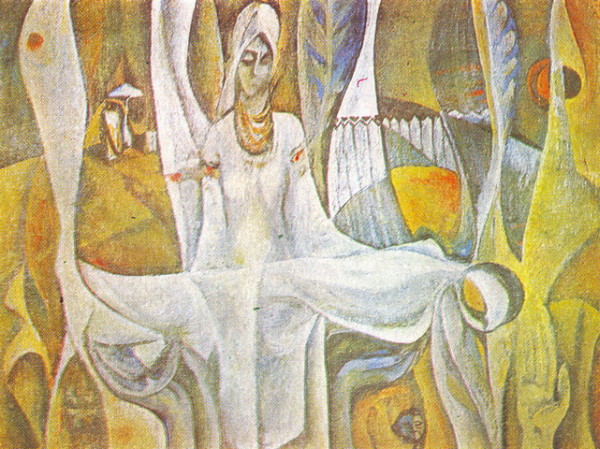

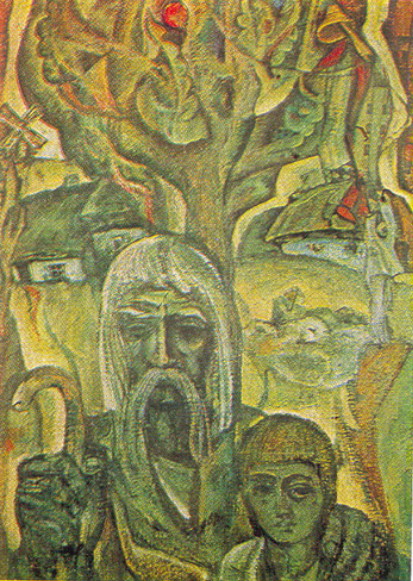
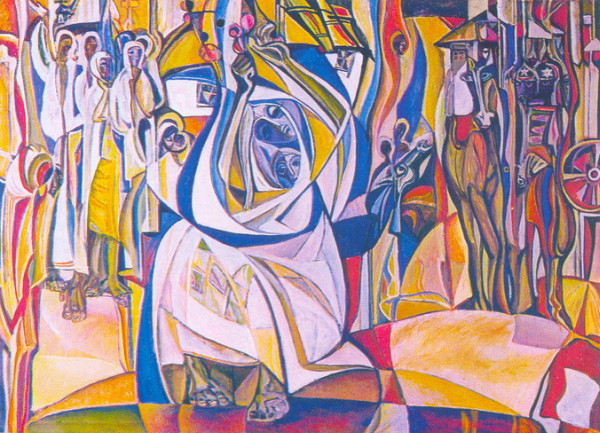
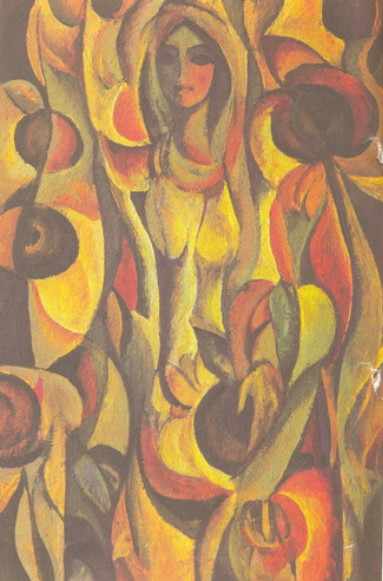
.jpg)
.jpg)
.jpg)